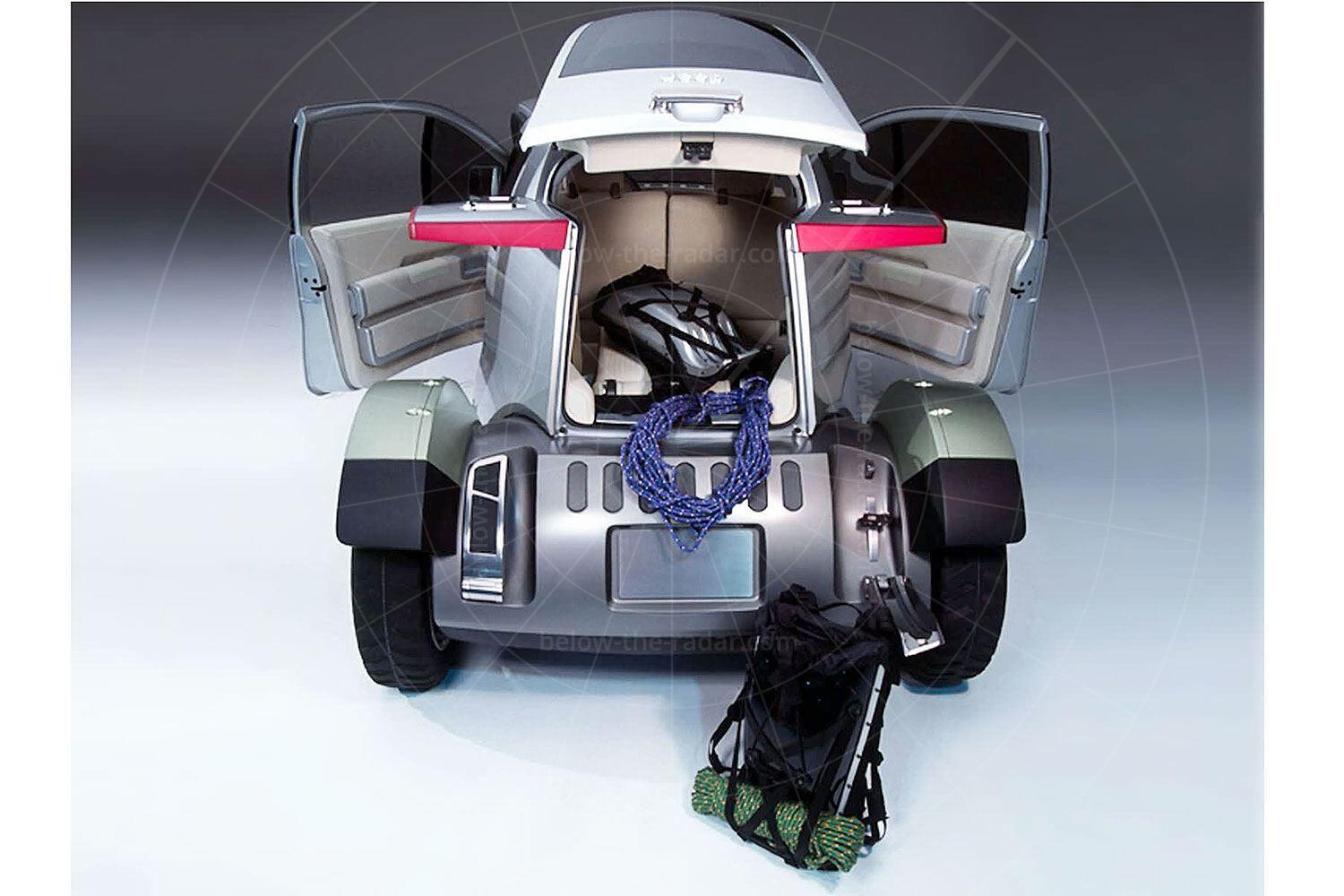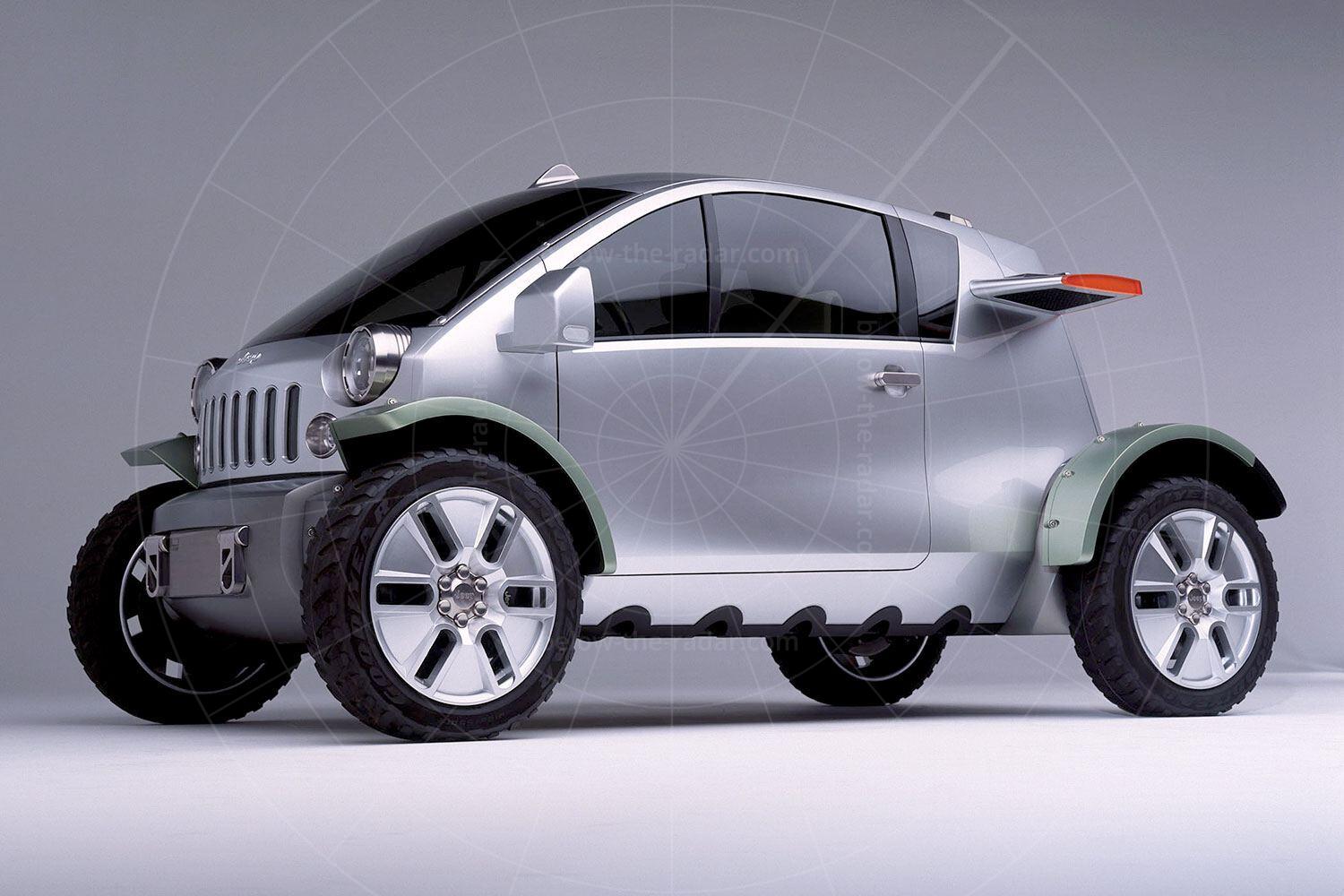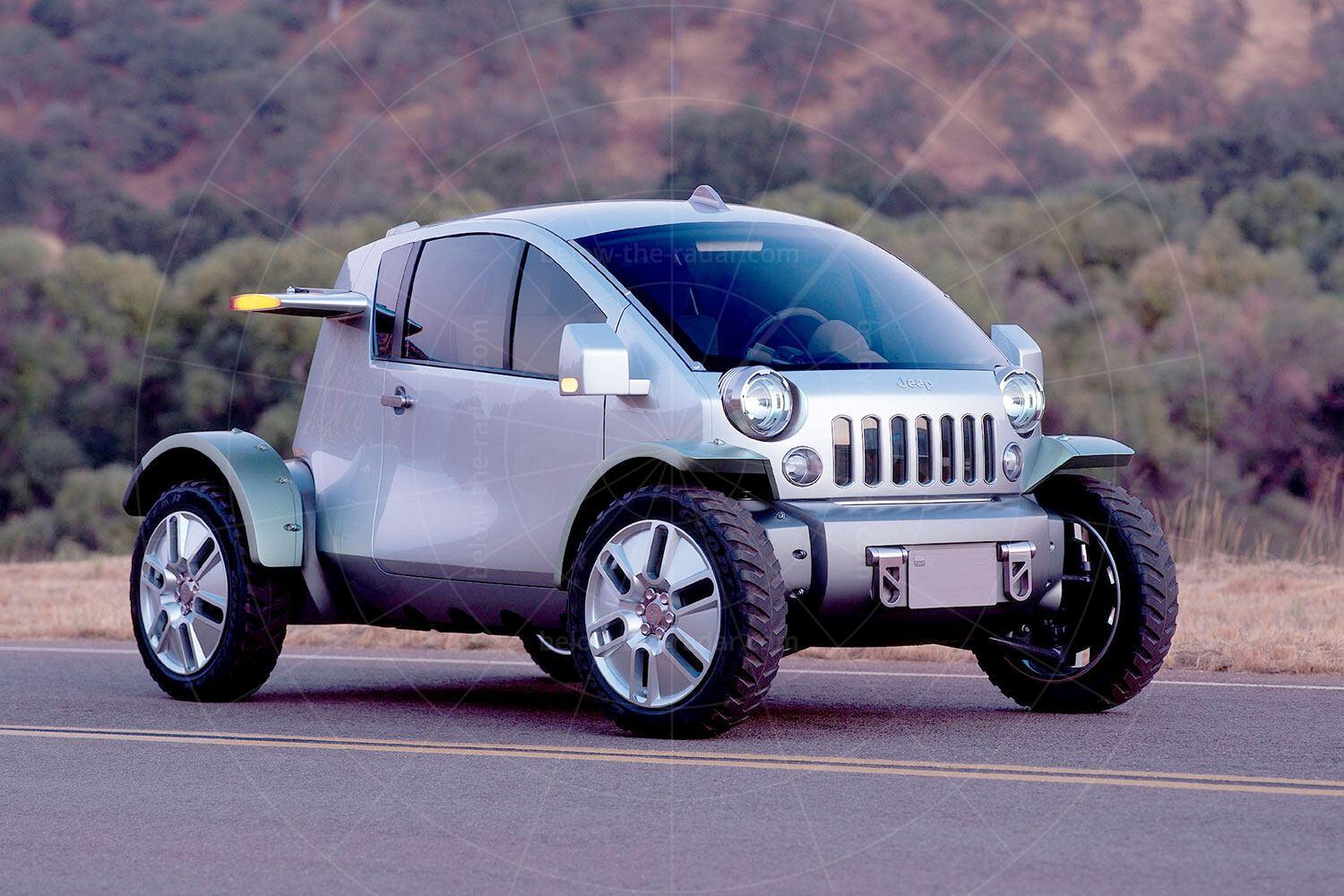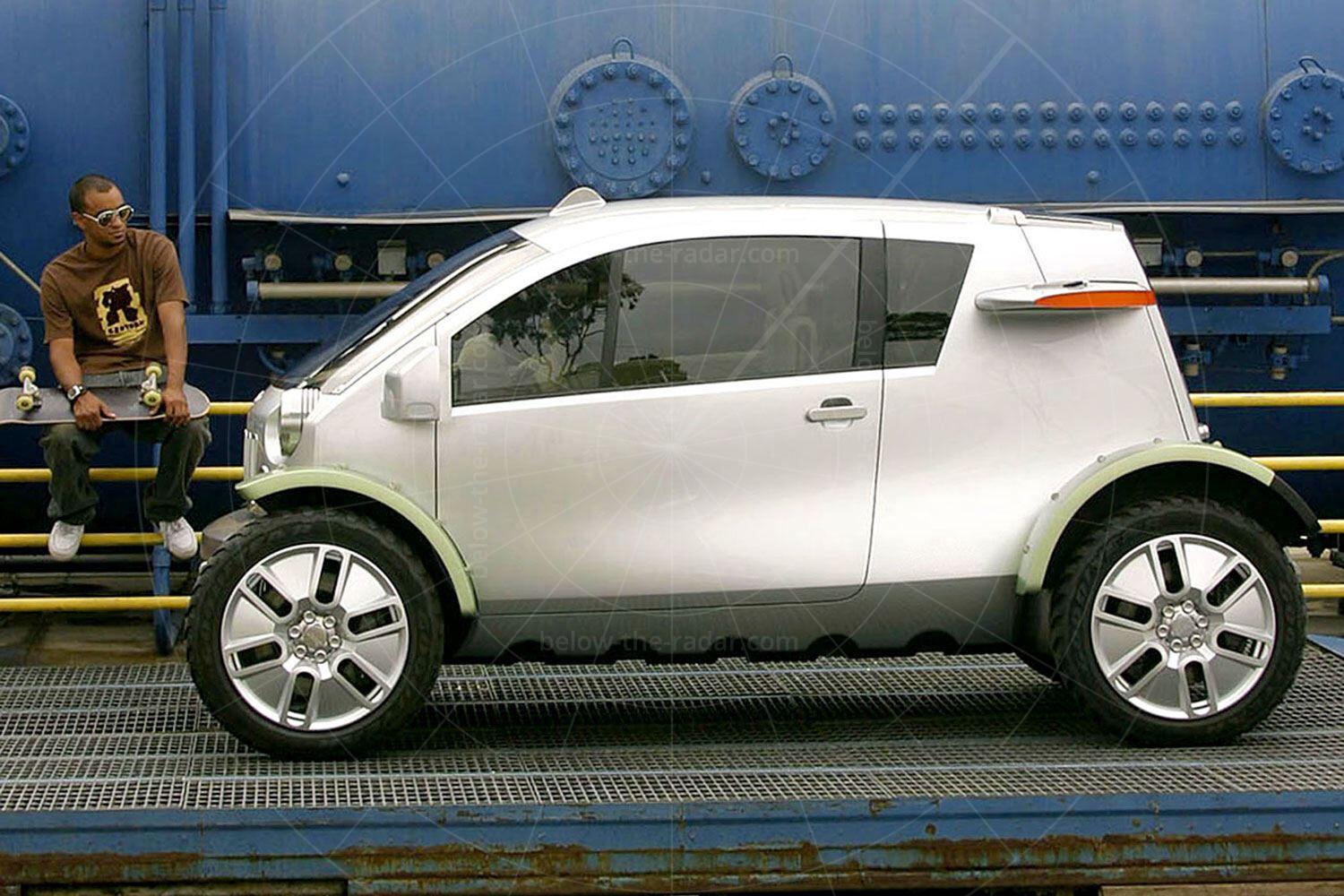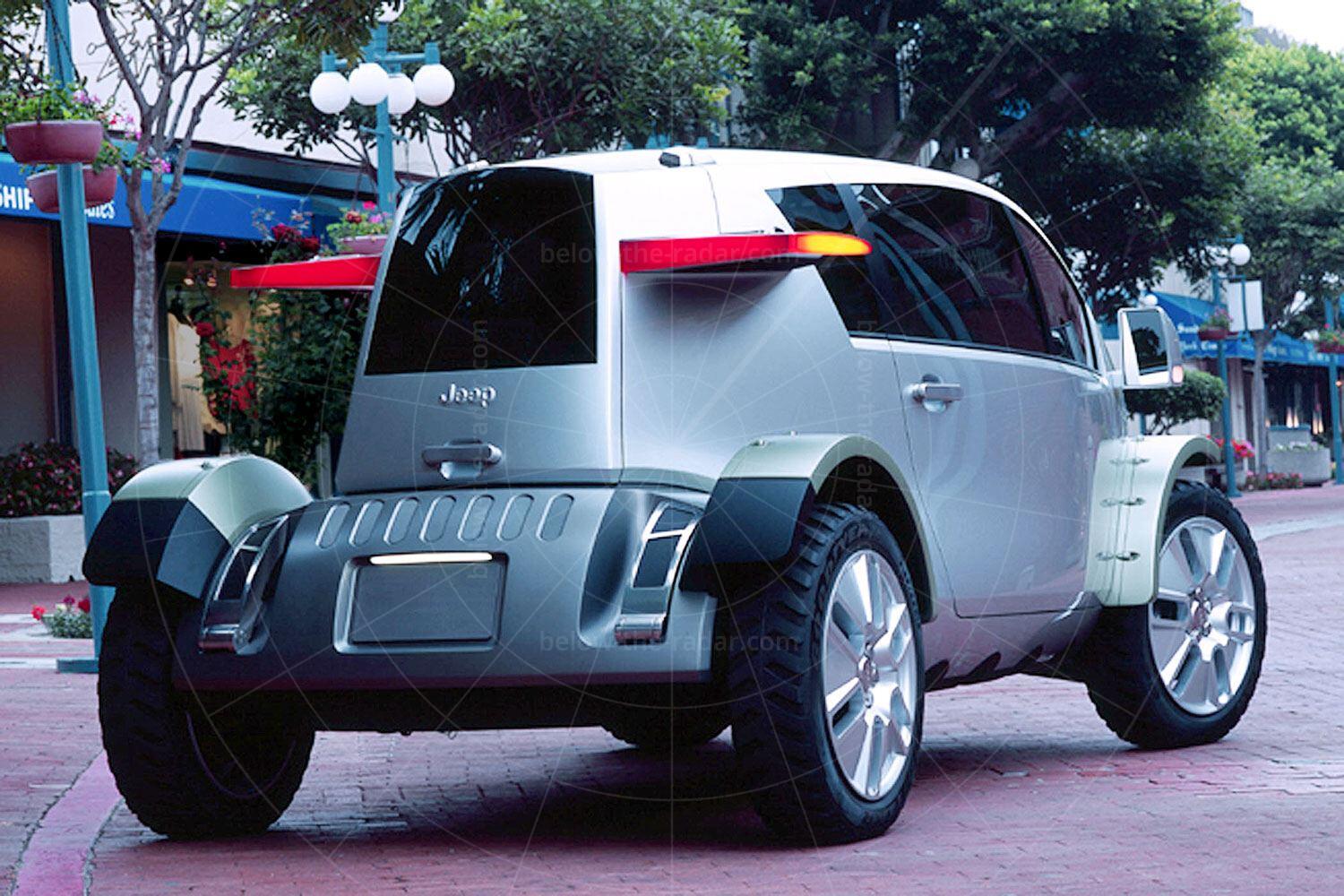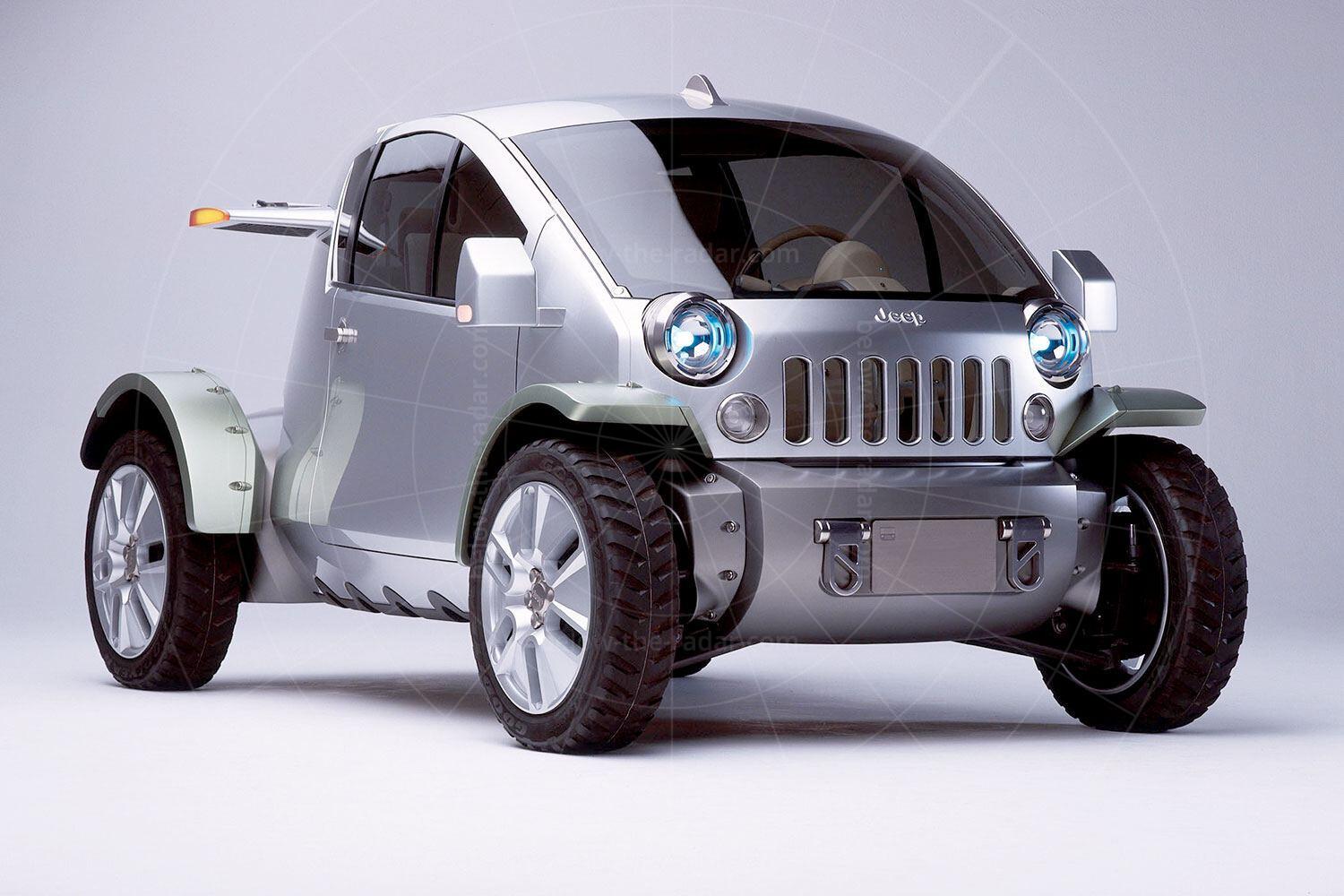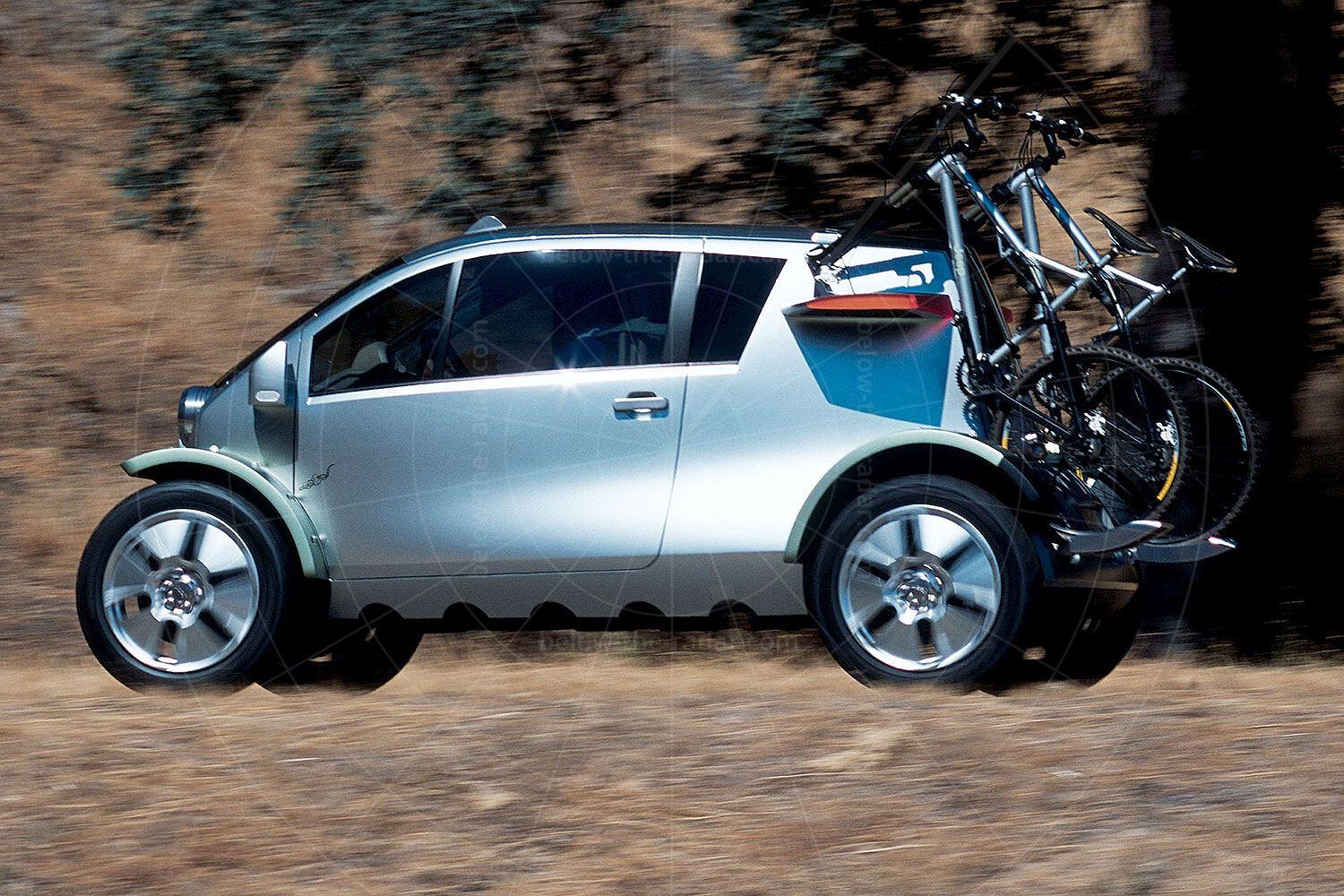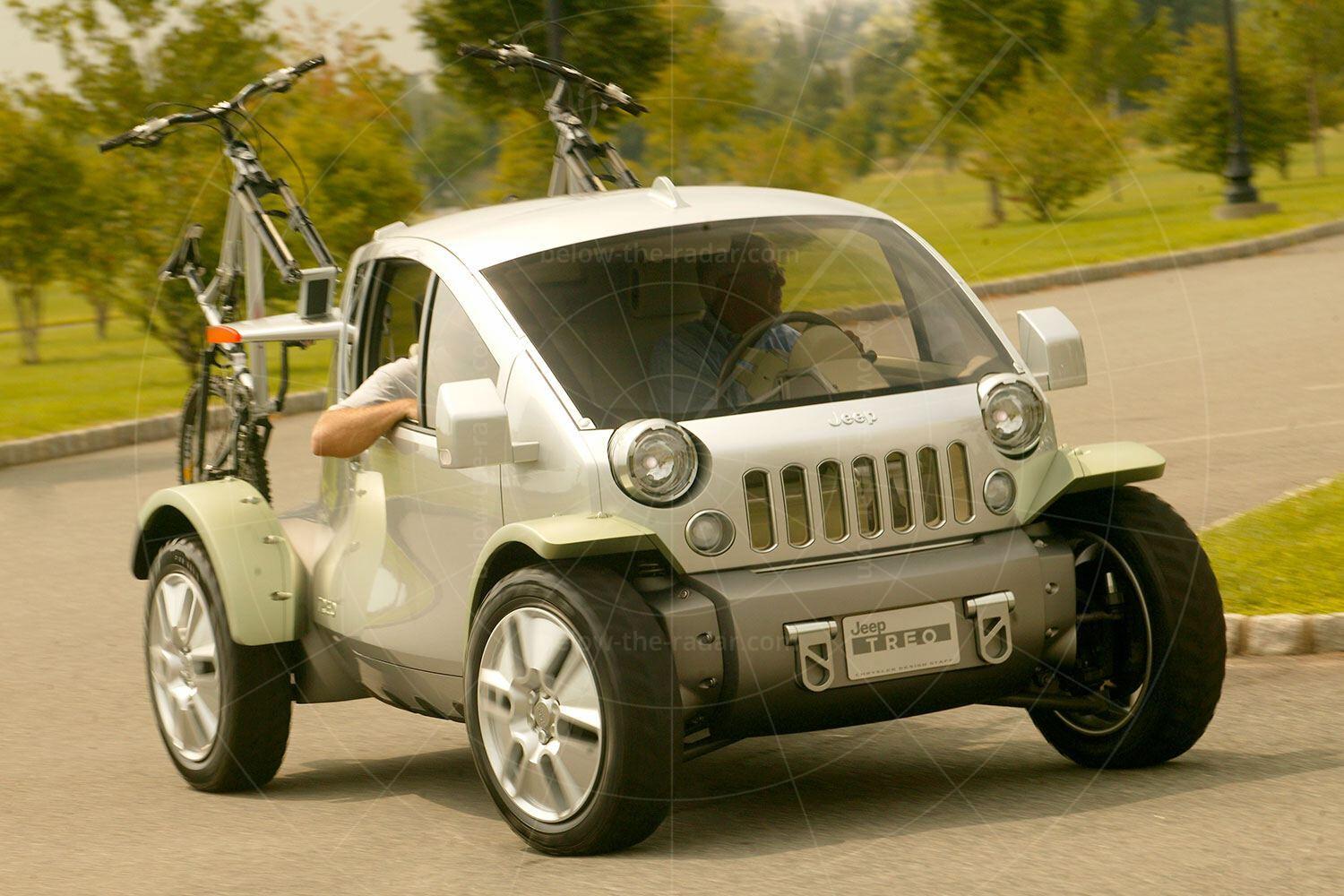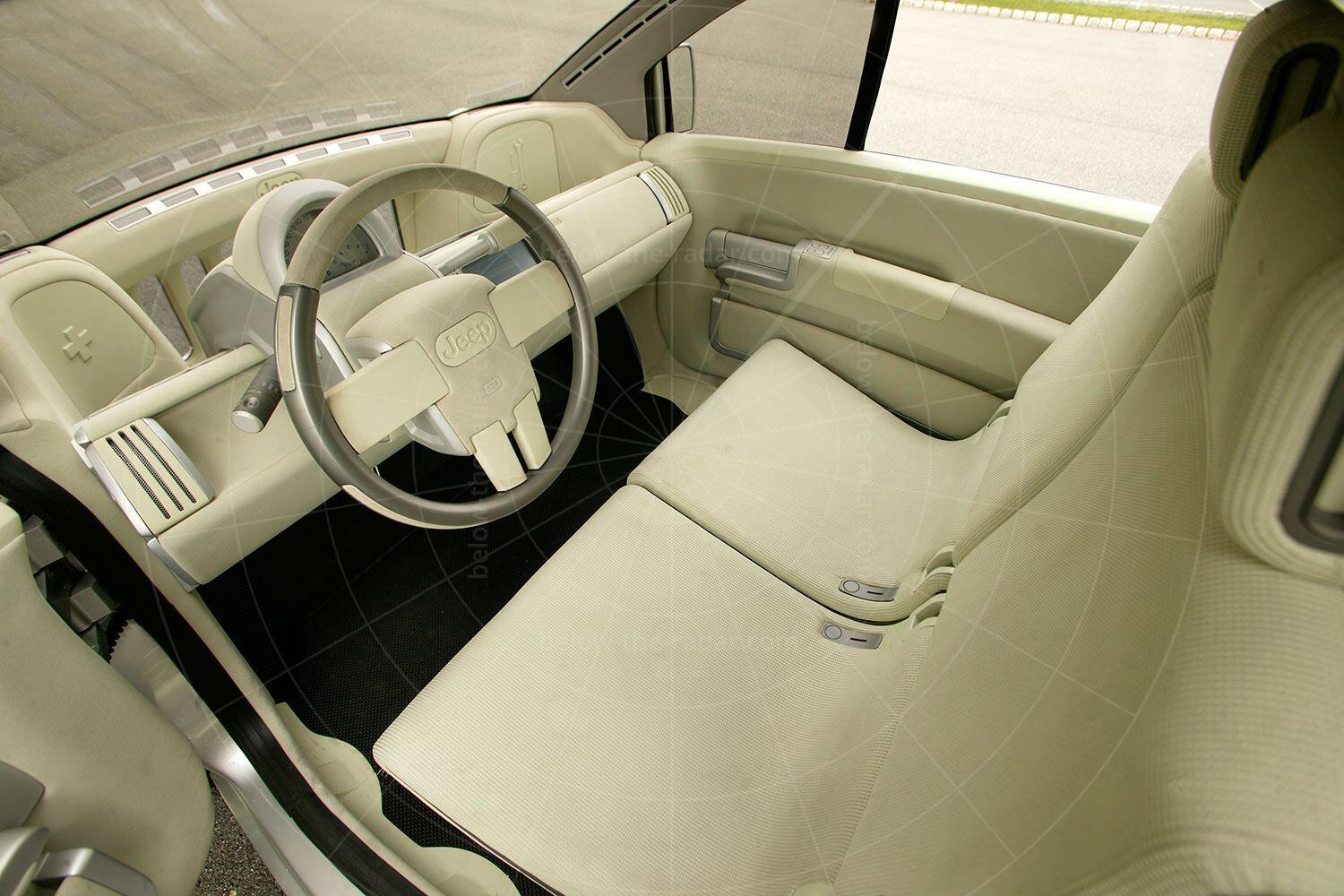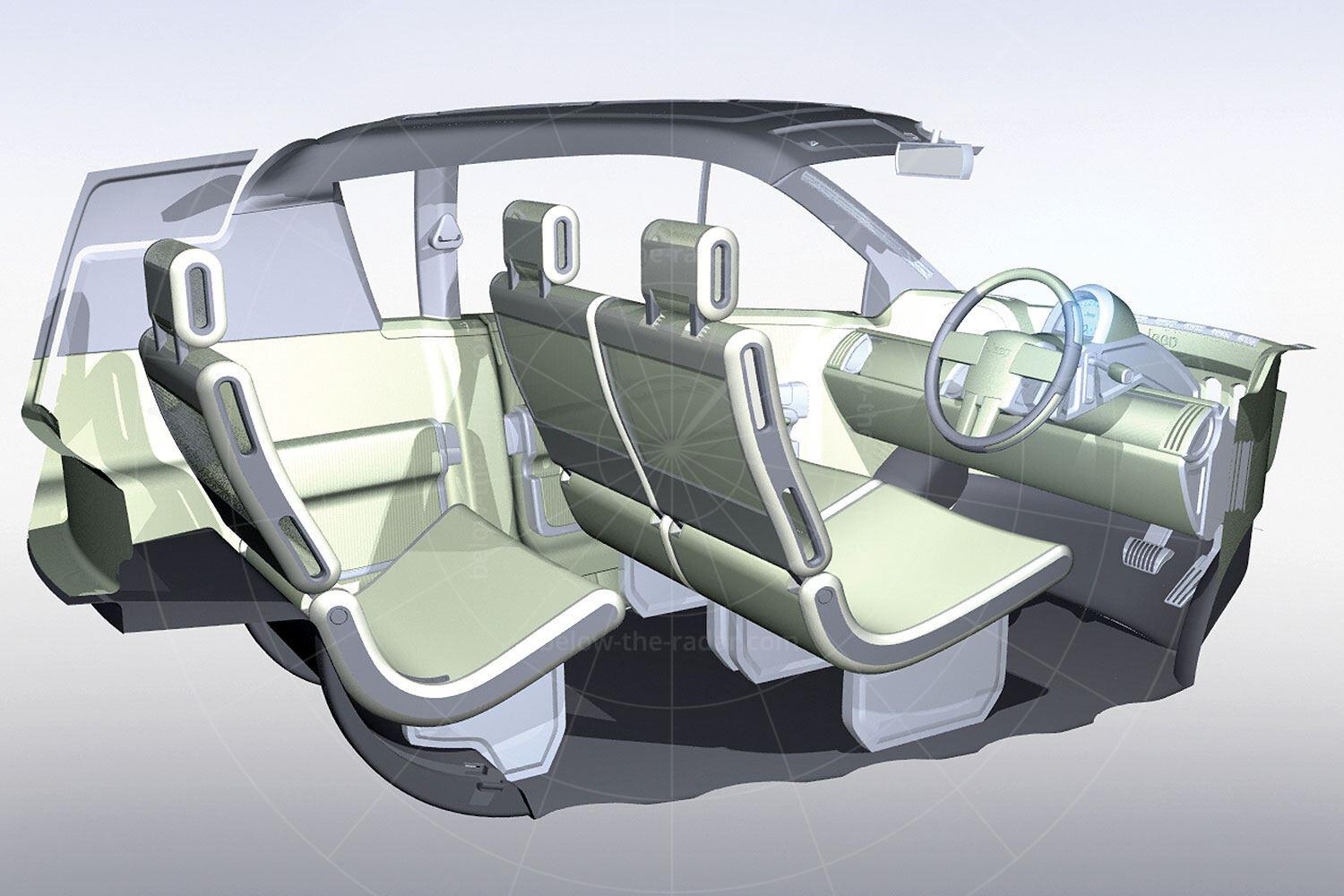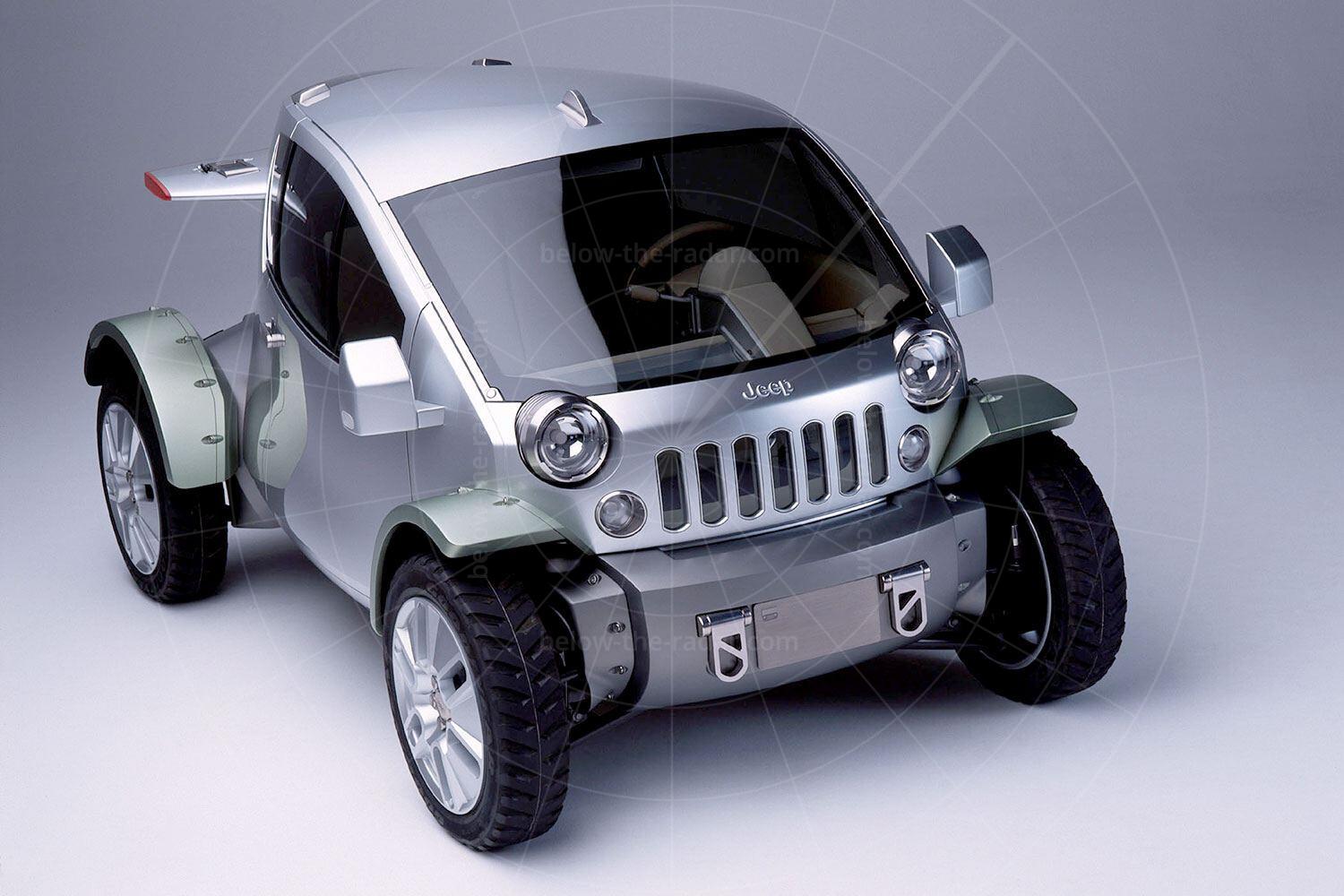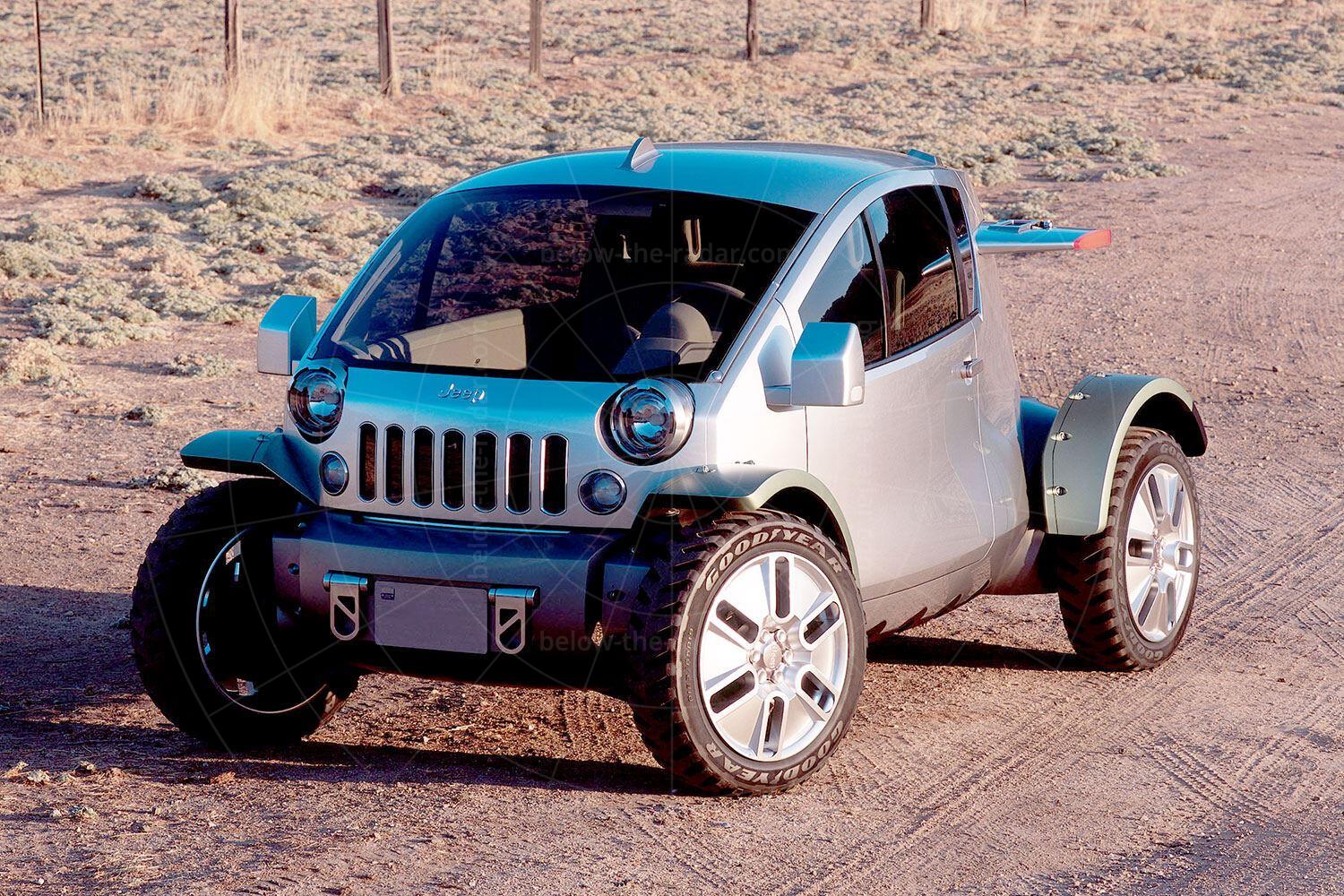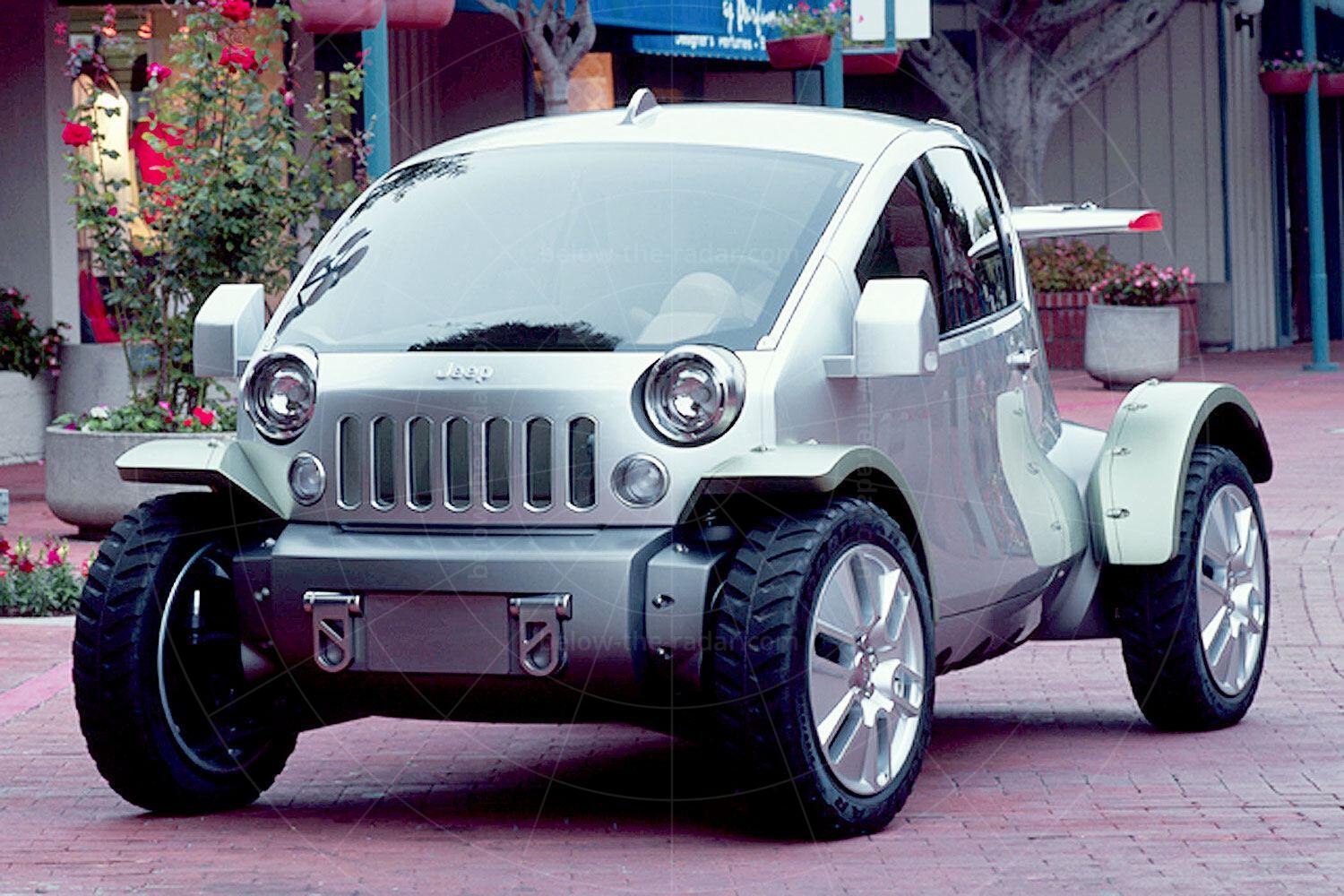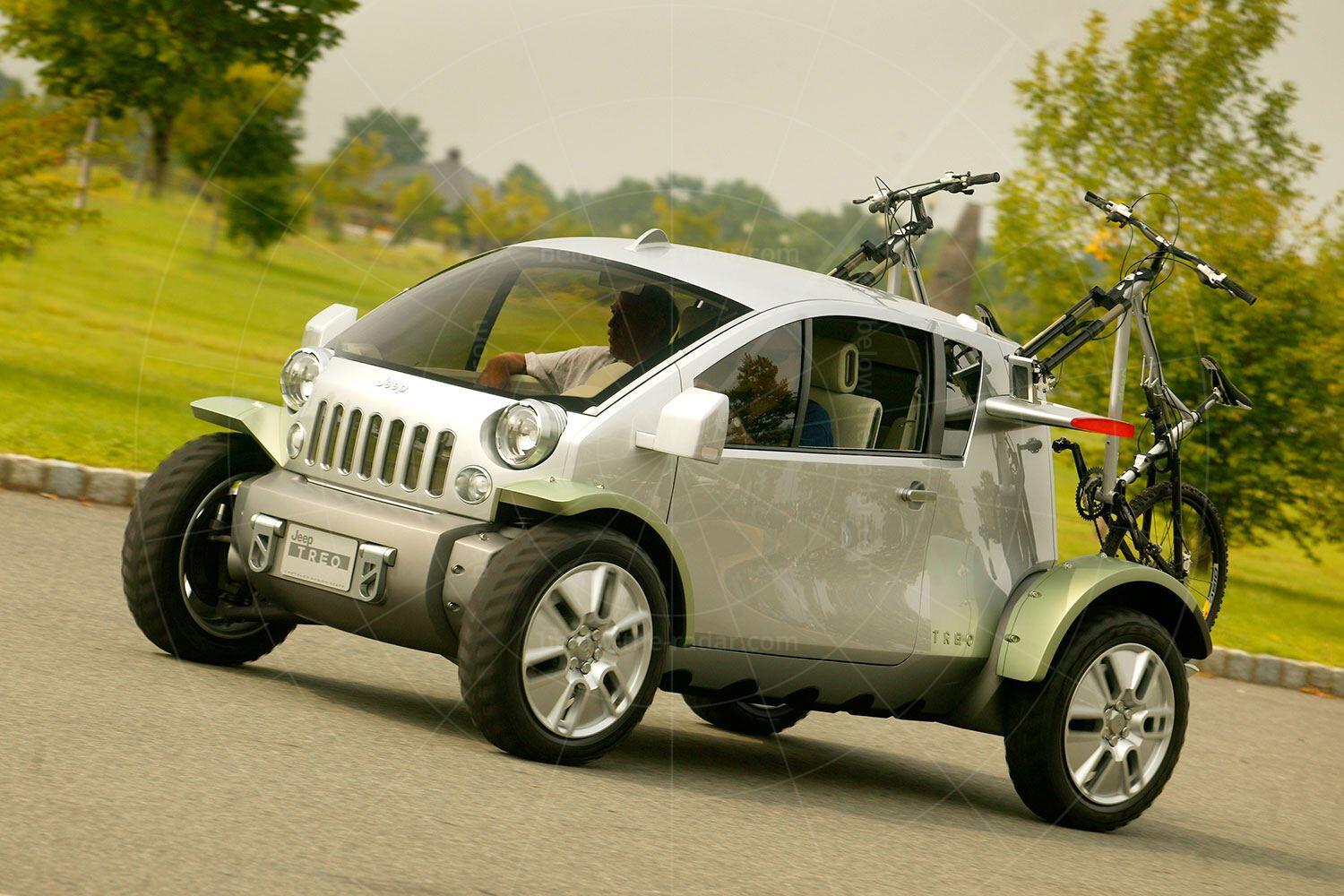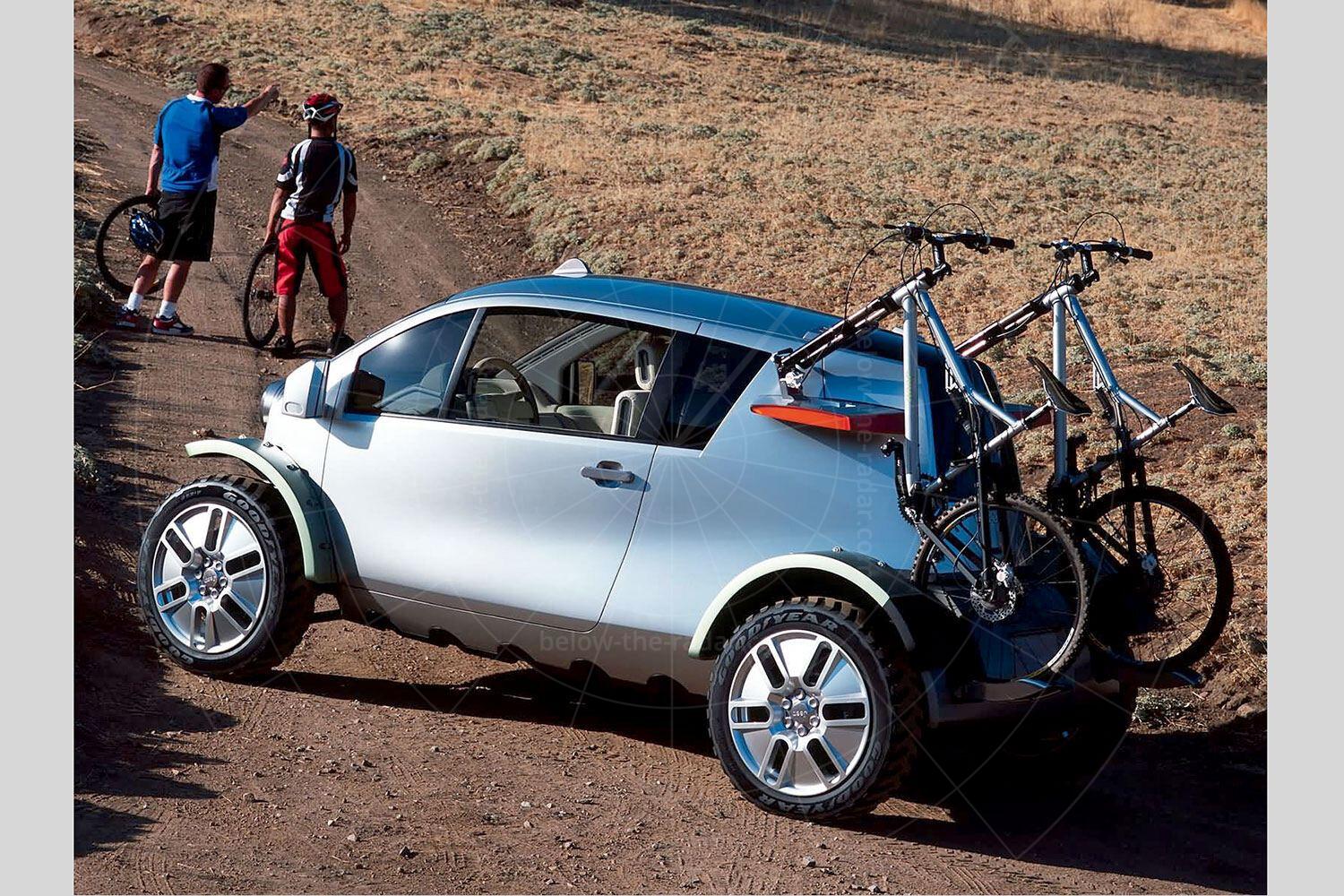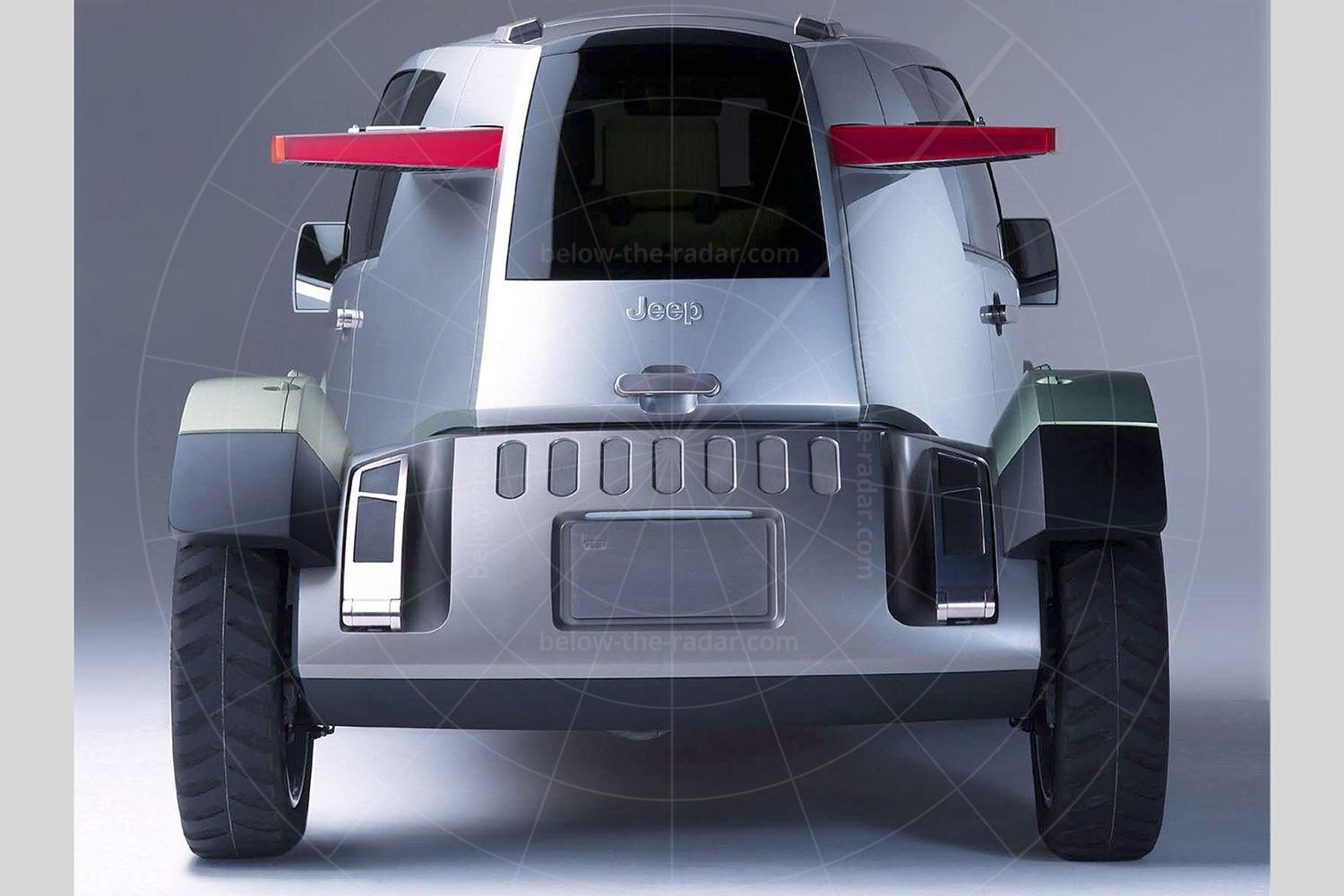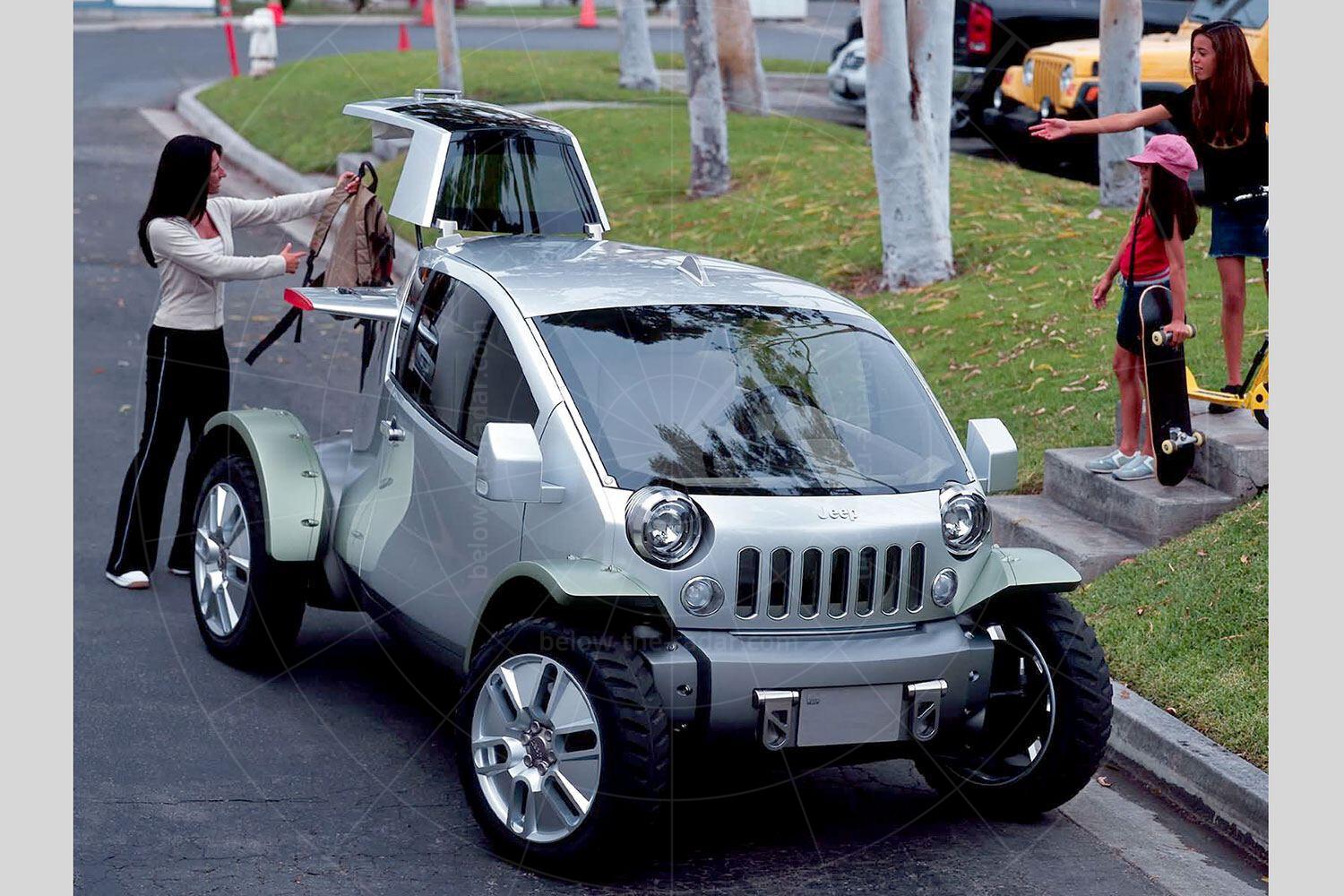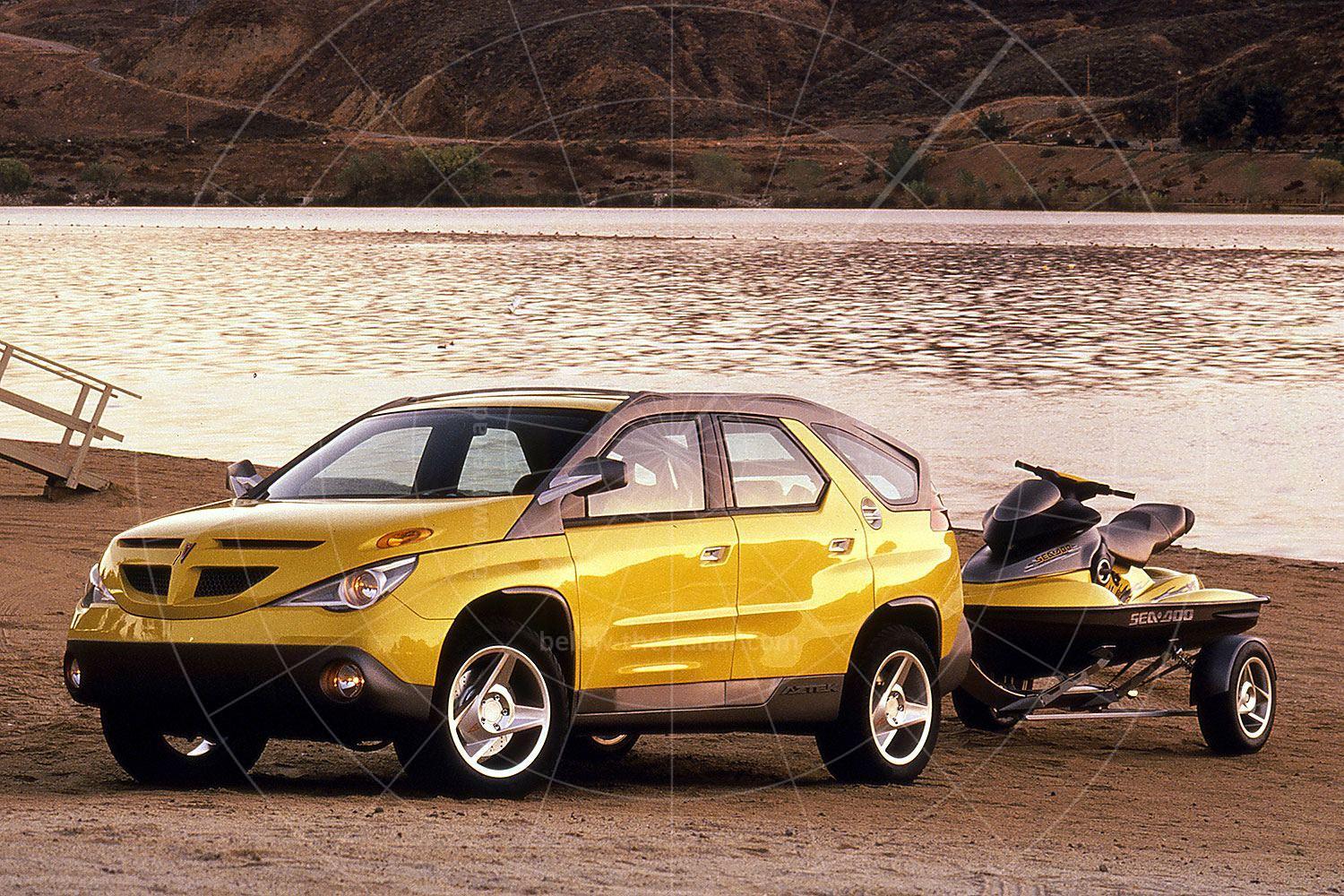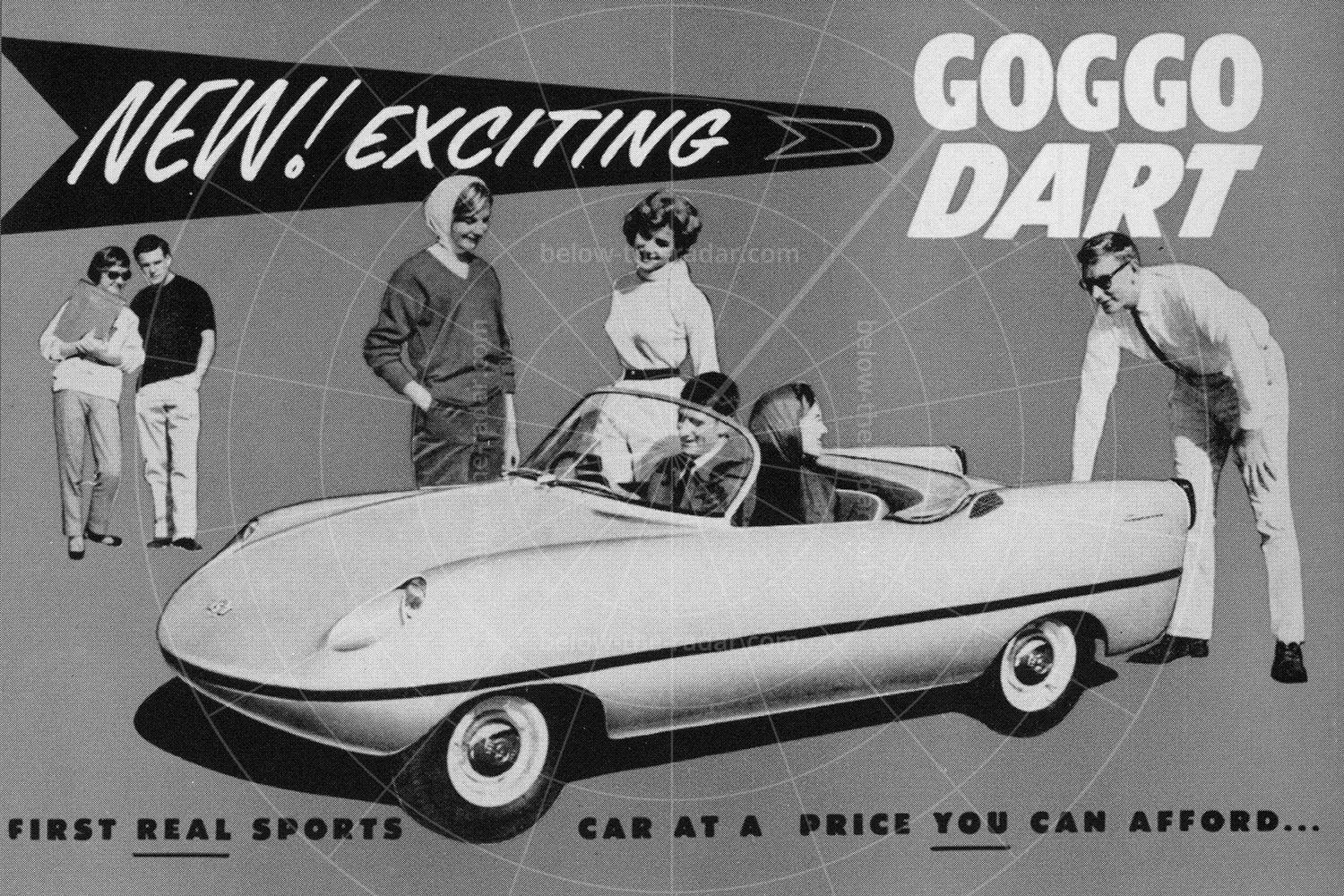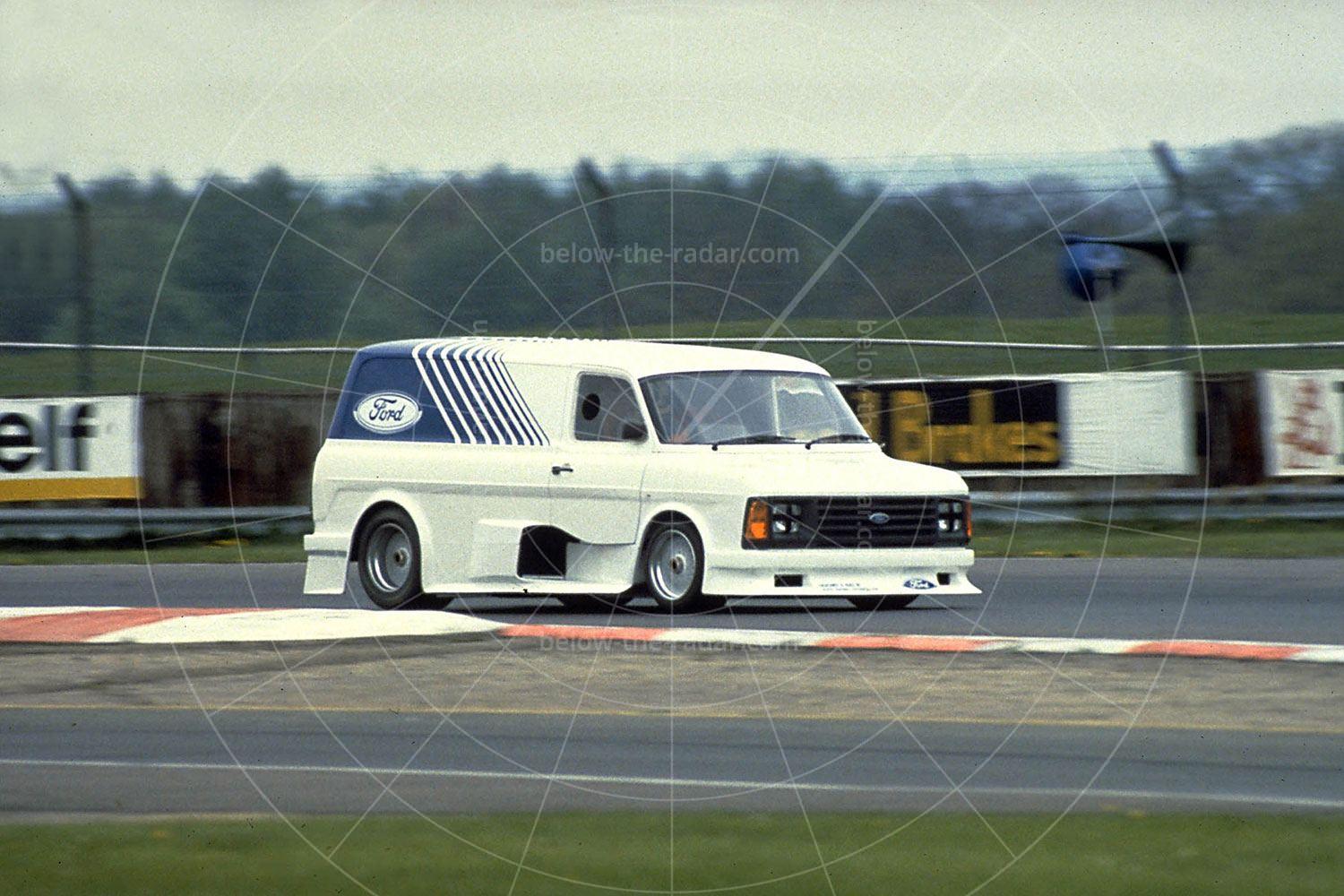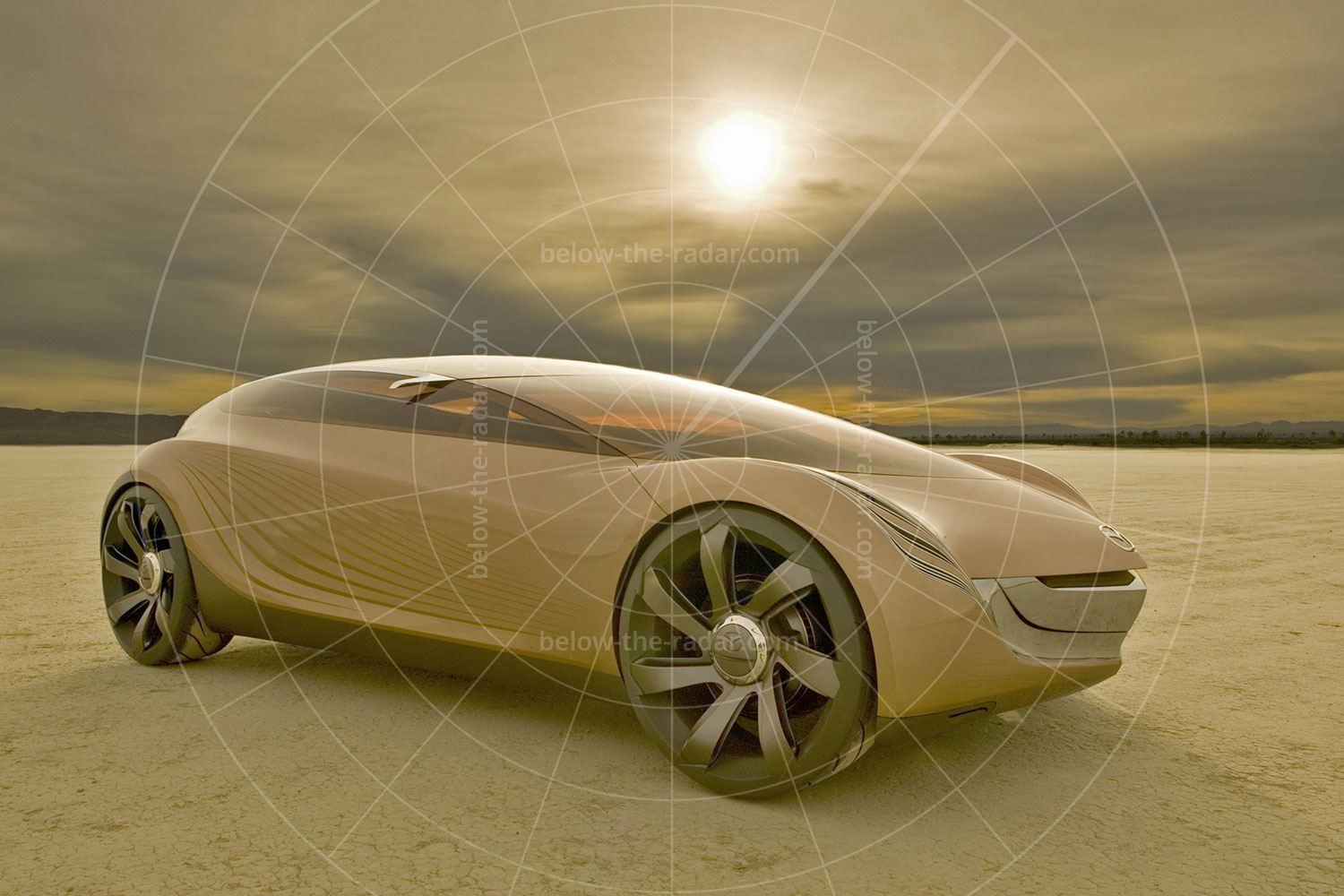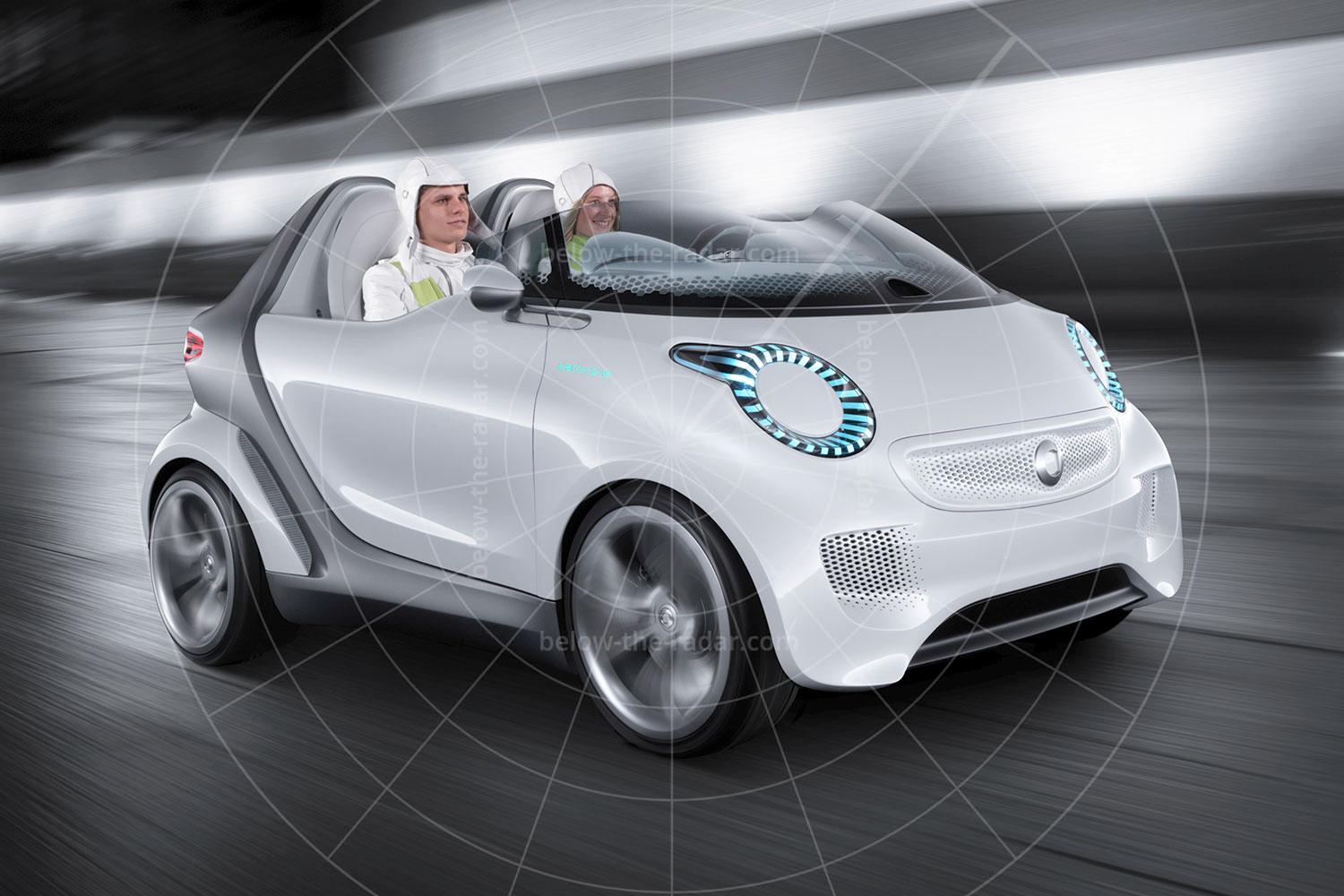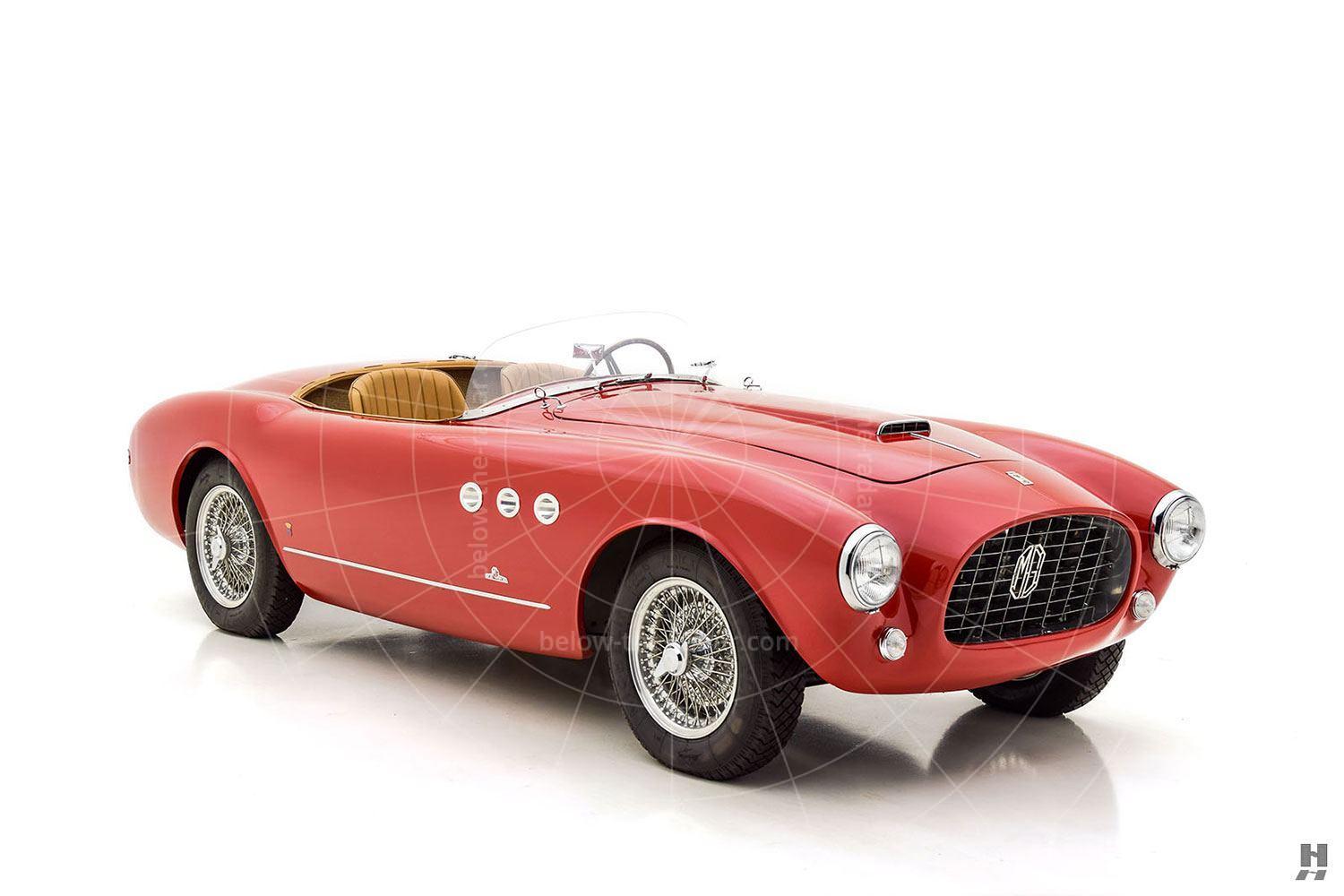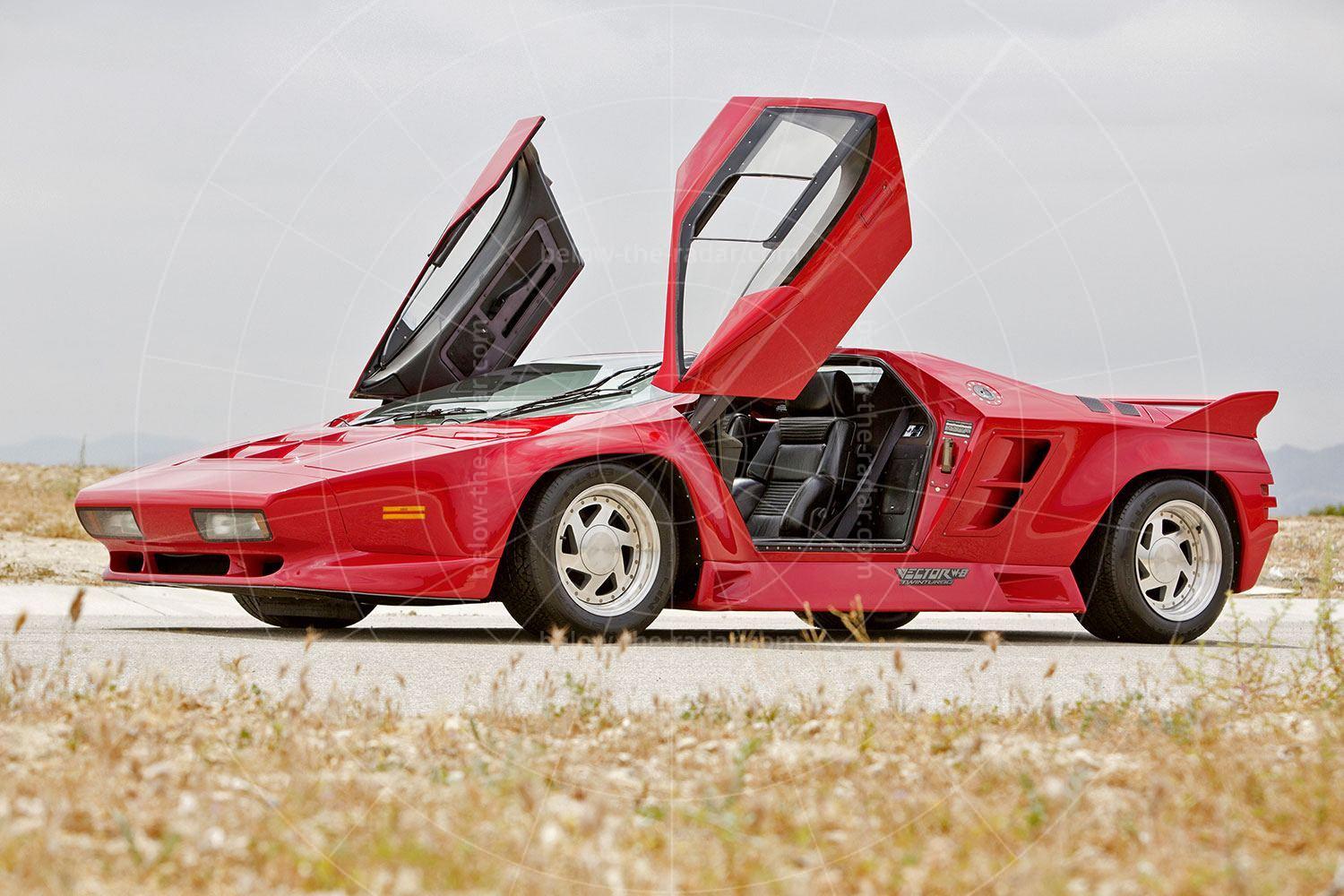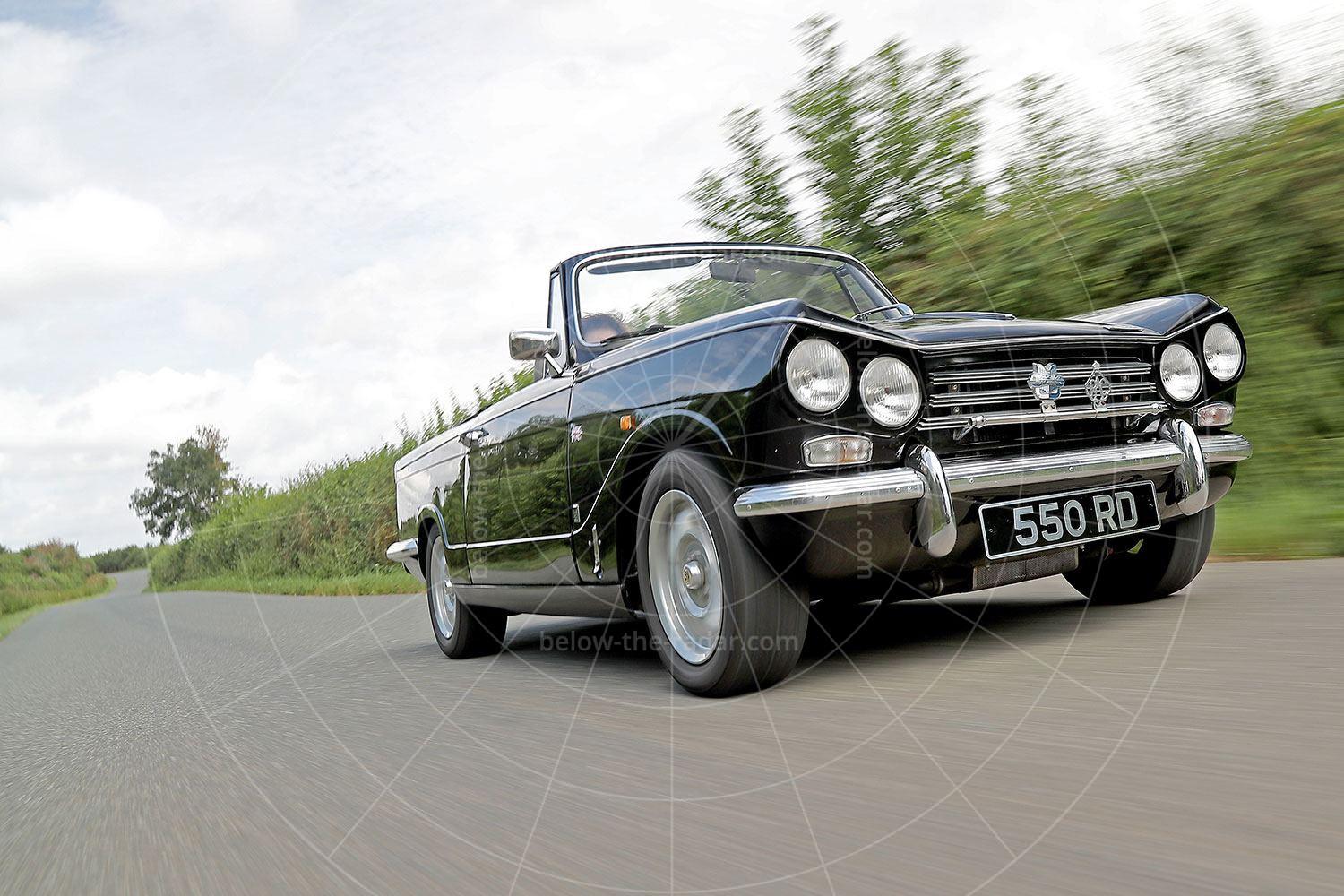If you had to come up with some of the most profligate cars ever built, your list would no doubt consist of a list of SUVs, including – most likely – a string of products from Jeep. But if the Treo had gone into production there’s no way it would have belonged on such a list, because this would have been the most efficient and compact car ever to wear a Jeep badge. Indeed, it would have been one of the most compact and efficient cars of any kind.
Jeep summed it up pretty well in its introductory press release which stated that the Treo offered “A vivid new interpretation of where the Jeep brand could go in the future. The Jeep Treo exemplifies the idea of “fluid imagination” thinking in a stunning, unexpected package – a form and presence that challenges the brand’s traditional dimensions, but in the end, can still be viewed as authentically Jeep. The Treo is the next-generation, urban-active Jeep – one that will allow it to thrive in a city or campus environment, yet one that will easily take its owner to the trailhead. All of this adaptable with the ability to use the freedom of fuel cell technology”.
If you’re wondering just how small the Treo was, there’s a clue in the name, as it could seat only three people. Bearing in mind most Jeeps can comfortably accommodate more or less double this, the Treo was quite a departure for a company which until now had always assumed that the maxim ‘biggest means best’ contained more than a mere grain of truth.
The purpose of the Treo was to offer stylish urban transport for young drivers who wanted to escape the city at the weekend and enjoy some outdoor pursuits. As a result there was ample ground clearance and most of the other characteristics you’d expect of a Jeep – just in a smaller package. So there were large wheels with ultra-grippy tyres along with exposed towing eyes front and rear. In the event, Jeep never had the courage to build the Treo – or anything like it – in any form.
The Treo was a non-runner, because the technology it was envisaged to adopt was definitely from many years into the future. Motive power would come from a hydrogen fuel cell, which would power a pair of electric motors. As such, there would be permanent four-wheel drive, but not at the expense of efficiency; this would be a car that would also be among the cleanest on the planet, with ultra-low CO2 emissions.
Because the Treo didn’t run, it didn’t have to feature a working fuel cell or viable fuel storage system, so Jeep’s designers didn’t have to consider real-world packaging requirements all that much. Whether or not a fuel tank and cell could have been accommodated within the Treo’s compact confines is open to debate, but one thing that would have made things a lot easier is a move to drive by wire.
By dispensing with the usual linkages, pipes, shafts and levers that control the brakes, steering and other drive systems of a car, Jeep used electrics and electronics instead for a full drive-by-wire system. As a result the limited amount of space available could be used much more efficiently, while the cabin could also be opened up more.
By adopting drive-by-wire the Treo was automatically also safer, but there was also another major benefit – not for the user, but for Jeep itself. It could slash manufacturing costs by not having to engineer Treos for different markets depending on whether they were left or right-hand drive – the car could be switched from one to the other with the minimum of effort.
If you’d removed the Jeep badges from the Treo, you’d probably have struggled to identify it as a Jeep save for one aspect – that classic seven-bar grille. While even now Jeep builds cars that feature massively flared wheelarches, the Treo went a stage further with its open-wheeled design. As a result the passenger cell was surprisingly narrow; with the car having an overall width of just 66 inches, or 168cm, the cabin was amazingly compact for a Jeep.
While the open-wheeled layout was certainly eye catching, the most unusual aspect of the Treo’s design was its tapered body. Because the rear of the car was so narrow, it was necessary to mount a small fin at the top of each rear quarter panel, to house the lighting units – they also acted as anchorage points for the pair of mountain bikes that could be fitted. And while the whole of the Treo’s rear could be opened up with a vertically-hinged tailgate, there wasn’t a lot of carrying capacity in the load bay, so if mountain bikes did need to be carried, the only way of doing so was by leaving them on the outside.
Just like the exterior, the interior didn’t look much like anything ever to have come out of a Jeep factory. The very narrow cabin meant Jeep’s designers had to be pretty focused to fit everything in; the result was a minimalist interior that featured two seats butted up to each other, with a third one behind. In front of these was a dash that was incredibly simple in its layout and features; a single binnacle in front of the driver was the highlight, but there was a neat twist. By mounting the binnacle and steering wheel on a sliding module, the car could be converted from left to right-hand drive in seconds, helped by the use of drive-by-wire technology throughout.
| Vital statistics | |
|---|---|
| Debut | Tokyo, 2003 |
| Engine | Rear-mounted fuel cell, one electric motor per axle |
| Transmission | 6-speed semi-auto, four-wheel drive |

